Note: The following article contains major spoilers for Fahrenheit and Heavy Rain. It also makes multiple references to sexual violence and suicide. If you are struggling with suicidal thoughts, contact a suicide prevention organisation near you. For those in the U.S., you can reach the Suicide Prevention Lifeline at 1-800-273-8255 or find them online at suicidepreventionlifeline.org. If you are in the UK, you can call The Samaritans on 116123 or visit their website at www.samaritans.org.
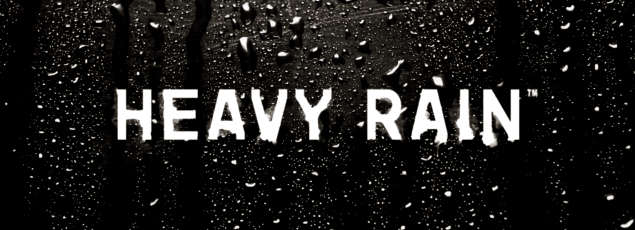
"The first movies [...] All they could do with it was "the attack of the train" and "the attack of the bank" because it was big and spectacular, and that was fine; but, as the technology evolved, movie makers were able to tell more subtle things. [...] We are at a stage in the [games] industry where we can stop making the attack on the train or the attack on the bank; we can move to something more subtle now. We should create our own Metropolis and our own Citizen Kane".
- David Cage, Tense Questions: David Cage on Heavy Rain
In the decade since the release of Heavy Rain, the tides have slowly turned against it. There were always supporters and always detractors of David Cage's cynical 2010 thriller, but the ear of game criticism has become more sympathetic to complaints of its plot holes, underwritten characters, and dependency on known archetypes over time. The counter-reaction to the game has intensified from a trickle to a stream. So much that newer gamers would probably be surprised to find out that the game was praised as a revolution in interactive entertainment. According to Cage, in March 2010, a month after the game's release, there were 375 reviews of Heavy Rain in the wild at an average score of 9 out of 10. Among its biggest fans in the critical world were Game Informer's Joe Juba, who described it as a "masterpiece", and Gamespy's Anthony Gallegos, who praised it as "the most intense emotional experience I've had with a controller in my hand". At the 2011 BAFTAs, Heavy Rain was nominated for seven awards, including best game, and won three, more than any other work the academy assessed. Those awards included that of Best Story, a category in which it trounced both Mass Effect 2 and Fallout: New Vegas, now seen as two of the 00s most enduring achievements in storytelling. If the game was that celebrated, it's worth all of us with interest in the medium taking a good, hard look at it.
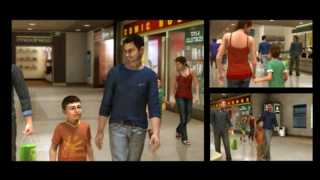
Inspired by an event in which Cage briefly lost his son at a shopping centre, Quantic Dream's Heavy Rain tells the story of the kidnapping of a young boy called Shaun Mars by a Jigsaw-like villain, The Origami Killer. The Killer traps the children he kidnaps inside grates which fill with water as it rains, meaning they will drown without intervention. This criminal uses origami figures as his calling cards and puts parents through a gauntlet of horrific trials in which they must prove that they "deserve" their child back. The villain's unfortunate target at the time of the story is distraught divorcee Ethan Mars. Ethan lived an idyllic suburban life until, after taking his eyes off his son, Jason, at a mall, the boy was hit by a car and died. Jumping to try and save him, Ethan put himself into a six-month coma, and at some point between then and now, his wife divorced him.
The Killer tries to force Ethan to injure himself, murder a man, and eventually drink deadly poison to see the safe return of his child. For Ethan, keeping hold of Shaun is emotionally vital to him; if he relinquishes him, he says goodbye to the last person he loves. We play Ethan, as well as two investigators who have a shot at saving his son: FBI agent Norman Jayden and salt of the Earth ex-cop Scott Shelby. There is a fourth protagonist, Madison Paige, but she's mostly just a pretty woman who follows two steps behind Ethan. The non-playable character, Lauren Winter, also becomes a shining searchlight in the hunt for the murderer. Lauren is a prostitute who has cajoled Scott into letting her tag along on his evidence-gathering.
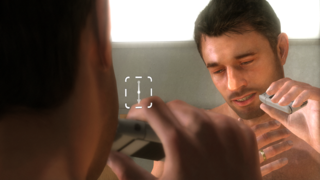
Players take actions in the game via quick-time events which have them tapping buttons and twitching the right-stick to match characters' on-screen actions. Unlike in most video games, a QTE in Heavy Rain doesn't have to simulate jumping a gorge or ripping a god's eye out; it can also be for hugging your spouse or drinking some orange juice. Every one of these interactions yanks on the pulleys of unique camera angles and motion-captured animations which Quantic Dream use to bring these characters to life. The player's choices throughout the game and their scores on these hand-eye co-ordination tests determine the exact ending.
When the community first discussed this title, we had a lot of interference on the line. At the time, there was a desperation to see games step up to the podium of high culture. Which is not to say that writers gave insincere reviews of Heavy Rain because they wanted it to be transcendent of the medium, but there was a certain potential represented in the work which affected how we talked about it. Through the 00s, there had been some yearning to see video games legally labelled "art" as that legal definition would protect them against the censorship that was an imminent threat at the time. Sometimes, especially because of confusion between legal and cultural definitions, that overspilled into arguments about whether games were or should be art in all senses. Moreover, a lot of the gaming audience who were raised in the warm glow of a NES-lit TV screen were now all grown up, and many of them were looking for the medium to grow with them. Lastly, with graphical technologies advancing leaps and bounds, games were looking and sounding more like films than ever which then inevitably begged the question: Why can't they move us as powerfully as films?

Even many of those who wouldn't be caught dead using the phrase began romanticising the concept of a "Citizen Kane of video games": a hypothetical breakthrough piece that would respond to the above urges and advance the medium beyond the status of mere toys. Of course, because a lot of the gaming audience hadn't studied the techniques or histories of art or film, many debaters, myself included, started a very misinformed version of the "games as art" discussion. Perhaps the most common issue was that no small number of players assumed that if games were to mature the same way film had, they'd do it by adopting the same "mature" filmmaking methods. Suffice it to say this is never how other forms of media have come into their own.
Film's closest relation was the play, but filmmakers didn't achieve artistic acclaim by copying plays; they did it by working out how they could use the unique facets of their medium to move beyond theatre. They took the fixed perspective and sets of plays and used editing, cinematography, camera effects, real locations, and other unique elements to forge a type of emotional bond with an audience a play never could. Not necessarily a stronger one, just a different one. After all, why make Theatre II? It's a medium that already exists and is likely going to be more impactful in its original form.

I don't think there's anything wrong with a video game that uses the standards of film as a plugin; in fact, I might be a bit of an apologist for it, but it's naive to believe that your media becomes art by trying on costume pieces from the art bin. At the very least, it won't make your medium artistically unique. Given that video games operate fundamentally differently than cinema, due to the complication of player agency, you will never be able to apply all film-making techniques to them: they must find their own creative skin.
None the less, because a lot of people thought that games and films must grow towards the same sun to be culturally self-realised, a lot of people saw Heavy Rain as a bud of that realisation. After all, it ticked all the boxes on our "art" checklist as we understood it (or misunderstood it) from film: set in the real world, filled with emotions of sadness rather than empowerment, exploring adult issues, a French auteur director. It had to have artistic worth, right? It's not nearly as convincing a mindset ten years on when there's a whole school of developers making games in this mould, many of them having gotten a grasp on the human experience that Heavy Rain didn't. However, as I want to argue here, I think that even if Heavy Rain wasn't the Citizen Kane of video games or perhaps even the Zodiac of video games, it did contribute to the medium. Its positive additions to the craft of computer games just aren't about its adherence to any filmic practice. It's also worth noting that while there were reviewers in 2010 who adulated Heavy Rain for its cinematic aspirations, there were also a lot of incensed comments slamming it for being "not a game". I don't believe that a work not being a video game makes it any less entertaining, valid, or thought-provoking. In various ways, Cage's games might not be those things, but it's never because they include cinematic content.
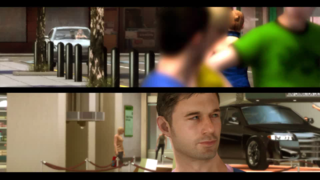
There are also many reasons to believe that we can't directly compare any game's storytelling to that of a movie. Ian Bogost, a communications and media professor at the Georgia Institute of Technology, points out that the basis of cinema is editing: films consist of a series of shots screened in a particular sequence, with the ordering of those shots conveying character perspectives and the progression of events. Filmmakers create meaning through how they cut together film, but Bogost notices that during play sections, Heavy Rain does not cut to create meaning, only to reposition the camera for the convenience of the player. In his piece, There's No Such Thing as a Cinematic Video Game, critic Doc Burford revisits the point about editing and then observes that video games are a fundamentally different beast than film because, in film, a director always has control of the camera. In a game, it's frequently the player who does.
Bogost and Burford teach us that video games are not simply films with some agency stirred in, and films are not simply games with the agency filtered out. While we might want to make a video game more like a film for artistic purposes, fundamental divides in who controls the unfolding of scenes mean parts often aren't interchangeable between cinema and games. Given this, it's also inappropriate to criticise Heavy Rain, or any other game, exactly as we would a film. We may use the lessons we've learned from film criticism to critique some of their writing or visual design choices, and it's inarguable that Quantic Dream's projects take more from cinema than 99% of other games. However, we must also be careful to recognise when we're looking at an element unique to games and judge that element on its own merits. Particularly, it's important to recognise when mechanics may shape the storytelling or visual aspects of entertainment software and remain aware that in those situations, we cannot directly compare these computer game scenes to those of film.
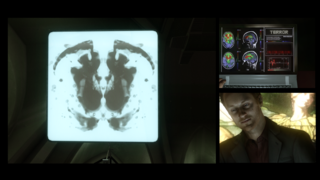
In an interview with Gamasutra, Cage himself dismissed the idea of Heavy Rain using filmic storytelling by pointing out that it contains very few cutscenes; almost no points at which the player isn't engaged in the control of the game. He's not wrong, but it's vital to recognise that while that interactivity may set the game apart from a film, we sometimes treat player agency as a magic powder which makes a narrative meaningful to its audience. It's not that. It's not enough to say that the game invites interaction, and therefore, is good. We must gauge the characteristics of the interactions and decide from there what the character of the game is.
In Heavy Rain, plenty of those interactions are quick-time events, and QTEs get a bad rap, maybe deservedly. They're often used as a spackle that designers apply over any hole where they can't systemise the protagonist's actions. They tend to crop up a lot in "cinematic" games because films have specifically-choreographed action sequences. The director has a tightly-cropped vision of how a scene should play out that would be skewed by the player exerting power over the character's actions. The quick-time event is a way for the designer to retain interactivity without extending player choice. By placing the focus on the camera, actors, and set rather than the audience participation, QTEs typically lead to scenes which are audio-visually impressive but break the contract of agency between the developer and player. That's probably forgivable if the QTE serves as the perfunctory bridge between two meatier sections of systems interaction, but in Heavy Rain, this mechanic takes centre stage.
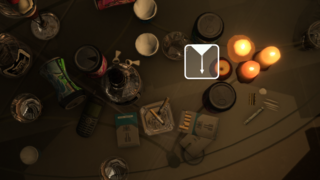
Cage printing whole games out of QTEs and dialogue options means that even if these titles had cavernous story depth, their mechanical depth could never match it. However, that needn't make his games strictly worse than others; they could potentially use their format to achieve a narrative profundity that other games don't. And QTEs, like any design component, can be incorporated well or they can be incorporated poorly. There's always going to be a ceiling to how rich the play from a QTE can get. However, there are a couple of techniques Quantic Dream start using in Heavy Rain that make their quick-time events highly expressive of the actions they represent and that have us encountering them organically.
One reason that QTEs can feel insulting to our intelligence is that they only let us input one action at a time. There's no choice about how we want to solve the problem in front of us; we just march to the beat of the designer. At least an on-rails shooter lets us control the aim and the firing simultaneously. Heavy Rain contains sections where button prompts fly at us in a linear pattern, but it has just as many scenes where we have a set of QTE inputs we can pick from. In some areas, we are free to wander a space where performing certain gestures on the controller, sometimes in conjunction with particular objects, triggers actions. Maybe we walk up to a TV remote and flick the control stick upwards to pick it up or approach a book and make an arc with the stick to open it. Choice is present in the scene despite the implementation of QTEs.
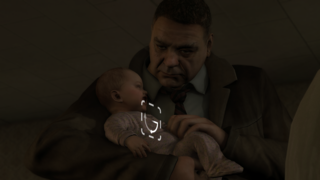
You'll also notice that most other games that use QTEs don't closely align protagonist actions with our controller inputs. It's a bit of a stretch to say that vaulting a wall or ripping a beam off a door feels like hitting the A button, but games frequently suggest this is the case. Many also leave a sizeable pause between our button presses and the character's response, hinting that instead of directly controlling the protagonist, we're giving them an order which they react to independently. Both issues were prominent in Quantic's previous release, Fahrenheit. For that matter, relatively few narrative-driven games care that much about creating a tactile sense of their world, and that feels like a missed opportunity. The studios behind action games spare no expense fine-tuning the spring of a trampoline or the thrum of an accelerator beneath your feet, and they do this both because those sensations are exciting and because they help ground you better in the space. Video games have the potential not just to let us see and hear a world, but also touch it. Yet, story games mostly forgo the feeling of reality beneath your fingertips for a strict diet of menu interfaces. Heavy Rain is the rare story game that cares that you feel the world.
The developers achieve much of that sensation by using control stick manipulation in favour of button presses. A hit of a face button is fine for simulating a short, sharp motion like a punch, but Heavy Rain recognises that having the player flick and finesse the control stick is more appropriate for when we move objects and characters through 3D space. The stick can cover distance and move with a definite direction, just like the person or item we are controlling. That we can push the sticks at variable speeds also allows the game to have us perform gestures briskly or delicately meaning that the QTEs are not just appropriate for vein-popping run-and-gun scenes, but additionally, more relaxed and tender moments. Both are possible because the engine reacts without delay to any QTE input.
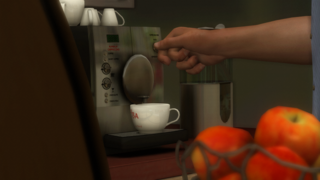
You might be wondering how much it adds to the experience to have the accurate sensation of turning a key in a car's ignition or placing a plate on a table when the game's meant to be about experiencing fatherhood and foiling a serial killer. To be sure, it works better in the warmup segments of the story as we're given the establishing shots of the Mars family through their meals, playtimes, and daily hygiene routines. You have mechanics that are about muddling through the everyday for a story that's about muddling through the everyday. But when the plot shifts into high gear, Heavy Rain becomes a game of two halves. The narrative is concerned with characters imbibing poison and putting the screws on murder suspects, and the play has methods for putting us in those characters shoes, but it's also still preoccupied with the slide of the world's drawers and the weight of its beer bottles. It's a little like escaping a burning apartment with a friend who pauses to admire how the doorknobs squeak as you turn them.
We must also talk about what the QTEs are not as much as what they are. Cage has made the bold claim that while most games have characters performing a limited array of activities, his games allow potentially infinite actions from the protagonists through the quick-time system. He's right, but only if you define "action" with respect to the narrative but not to the input. Another game may only allow the player to drive and shoot, but you'll notice that the driving and shooting mechanics are each realised through unique controls. A Quantic Dream game may prescribe play for any action, from turning on the microwave to kissing our wife, but when both of those activities require roughly the same input, it's hard to say that the player has infinite actions at their disposal. It's more the case that they have a narrower set of player actions to use than in most other games, but those expressions map onto more character actions. Heavy Rain and its spiritual sequels are capable of this because, in comparison to other titles, they make your inputs highly abstracted from the actions they represent. The game will never perform a deep dive on any one activity.
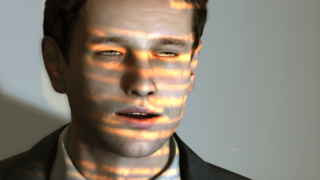
These mechanical morsels are also not, as David Cage has claimed, a language that he has developed. In a language, we need both signifiers and definitions. For example, the English word "sock" is a pointer to the concept of "a low shoe or slipper" or this Chinese character can reference what we'd call a tree. In the language of film, we could take a dutch angle to be a pointer to the concept of evil or unease, and in the language of games, we could take a red barrel to be an indicator of an explosive. The development of such languages is vital for media, as language allows you to convey a lot of meaning through only a few elements, letting you make individual pictures, levels, scenes, etc. dense with meaning. Film only exists in its mature form because of the development of the filmic language. So, if Cage had developed a new video game language, there might be the suggestion he'd have matured the medium along similar lines. However, the signifiers in Cage's language never have fixed meanings. There is a consistent set of symbols: Prompts to hammer the A button or rotate the stick, for example, but in one scene, the rotation prompt might signal the act of bandaging a wound, and in another, might represent the action of pushing a roundabout. A language where the definitions of words are constantly changing is not a language at all.
But I can't pretend I'm not a sucker for that attention to detail and I don't want to impress that because the game models the physical and the mundane, that it's focusing on the trivial. While Fahrenheit had minigames and metrics to represent psychological processes, Heavy Rain forgoes them entirely; there are no mental health meters or balancing beams that have you controlling a character's breathing. It's easy to think that without them, the game has no mechanical way of connecting us to the characters because emotions and relationships are grounded in the psychological rather than the physical, but that's not true. This game has multiple examples of contact with people and objects bringing us closer to the characters around us. It's there in us holding down a clump of face buttons to carry the groceries in for Ethan's wife, tilting the right stick to play airplane with Ethan's son, or spinning it to wrap bandages around a woman's arms. Physical can mean athletic, violent, or mechanistic, but it can also mean intimate or authentic, which is where Heavy Rain's QTEs get results.
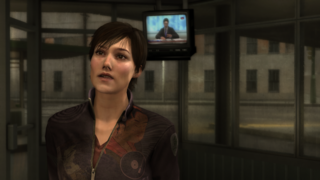
And there are technical marvels in here that I think Cage was right to rave about. Not necessarily to the extent he did, but I do believe the detailed character models and animations lend Quantic's games greater artistic leverage. They don't just make for more realistic-looking people; when you know you have higher fidelity textures and animations, you're going to be more willing to zoom in on your characters, allowing for close-up camera angles. Cinematographers use such angles for more humanising and intense portrayals. And it matters that the characters' movements are not just detailed, but also, unique.
Real humans don't move in canned animations, and when video game characters do, there's that voice at the back of your head that tells you you're looking at a puppet rather than a person. The same applies for when characters keep voicing the same barks over and over like you're pulling the string on the back of an action figure. Heavy Rain seldom repeats a line or actor movement, and that does a lot for its believability. Of course, we might temper that statement by saying that this tech is only potential; it's not fulfilment. You can write a great film with a terrible pen and a terrible film with a great pen. But that last sentence? That's me quoting Cage verbatim; I think he had a little less faith in the tech than we remember him having. However, knowing the importance of a strong script and being able to deliver one aren't the same thing, so let's get back to the writing.
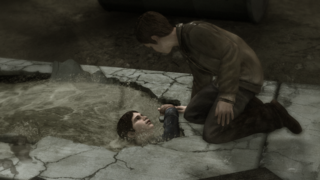
As we discover, The Origami Killer is Scott Shelby, the private investigator. When Shelby was a child, his brother John got trapped in a water pipe on a building site, and his drunken, neglectful father refused to rescue him. John died, and since then, Scott has been kidnapping children and placing them into reservoirs where they might drown, looking for a parent who'd do anything to save their child from choking to death, just as he wishes his father had done for John. Shelby visited potential witnesses of the murders, but it was never to put together a case; it was to clear up evidence that might link him back to the crimes. The game had kept us in the dark regarding Shelby's true motives by omitting any incriminating internal monologue and removing a scene where he went into a back room of a typewriter shop and bludgeoned a potential police informant to death. Who lived or died, whether the characters stop Shelby, and if Shaun makes it out alive, are all up in the air.
Now, around the time that Heavy Rain came out, a lot of thepushbackagainstthisstory concerned its plotholes, but looking back, not all of the criticisms about plot contradictions were on the money. Here are a few examples of real mistakes in the game's writing that critics found:
- When Madison finds out the identity of the killer near the end of the story, she says in an internal monologue that she should contact Norman Jayden to have him arrested. However, she's not heard of Jayden at this point, and when she later meets him, greets him as if she has no idea who he is.
- Ethan performs one trial which has him crawling through a vent shaft filled with broken glass. The Origami Killer is never found to have had an accomplice, so you'd think whoever placed that glass had to be someone skinny enough that they could squeeze into the vent. Therefore, the bad guy can't be Shelby because he's a larger man, except it is. God knows how the glass got in that enclosed space.
- An envelope sent by The Origami Killer becomes vital evidence in the hunt for them, but that hunt is only made possible by Shelby. Lauren isn't aware that the typeface on the envelope is a clue at all, but Shelby volunteers this information to her which brings her one step closer to finding out that he's The Origami Killer, and he does it for no apparent reason.
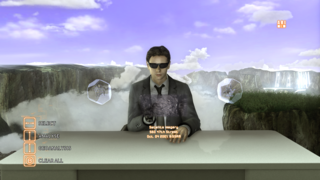
Criticisms like these may sound like nitpicks, but you have to remember that in a crime story, audiences are invited to treat even the tiniest discrepancies as clues. Answers don't come in the form of incontrovertible evidence landing in our lap, we find them in the size of a ventilation duct or inconsistencies in someone's knowledge of law enforcement. Because this is a game, there is particular pressure on us, the audience, to solve the case, but when we can incorrectly perceive mistakes in the writing as clues, that's easier said than done.
However, there is a whole class of events in the game that is often branded plot holes, but that has reasonable explanations. If you ask people to identify a logical impossibility in Heavy Rain, the first place they'll usually go is to talk about the scenes where Ethan wakes up from blackouts with paper cranes in his hand, having travelled some distance. If he's not The Origami Killer, then how are these scenes possible? But a number of characters question Ethan's psychiatrist, Clarence, about the possibility that he fits the murderer's profile, and Clarence explains that after coming out of a long-term coma, it wouldn't be surprising for Ethan to have a tenuous relationship with reality. We also know from Ethan's therapy sessions that he is subject to feelings of responsibility for the death of Jason. He starts waking up with the birds after reading about The Origami Killer in a newspaper, so it's entirely plausible that brain-damaged from his accident, Ethan is blacking out and recreating the symbols of a child murderer because he views himself as one.
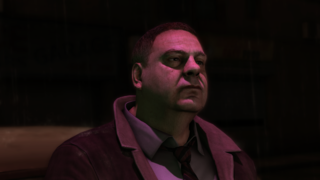
Or, take this: the scene in which we learn Shelby is the perpetrator has him unboxing all the evidence against himself and burning it. A lot of players have asked why the calculating Scott would risk holding onto so many incriminating objects. Isn't this a surefire way to blow his cover? However, it's common for serial killers to keep souvenirs from their victims so that they can savour the emotions of the attack. Shelby is obsessed with returning to this concept of the parent saving the drowning child, but Lauren sniffs too close to this compromising evidence, and so, Scott's hand is forced. He sends Lauren away and cremates the phones and the photos and everything else.
Or there's a peculiar rich kid, Gordi Kramer, who was dogged by rumours of murder, so Shelby begins a fake examination into whether Gordi's The Origami Killer. Shelby's detective work lights a fire under Gordi's millionaire father, Charles, who tries to make this investigation vanish by putting out a hit on Shelby and Lauren. Shelby comes out kicking, storms into Charles' mansion, puts a bullet in every one of his bodyguards, and forces him to come clean. Charles confesses that Gordi, playing copycat to The Origami Killer, kidnapped a child and held their head underwater. Gordi's crime was macabre play-acting, and he didn't mean to kill the boy, but it went too far. Disgusted, Scott goes to exit the room.
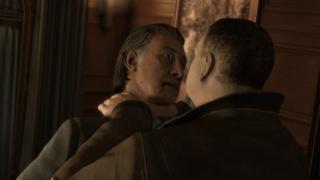
There would appear to be three different plot holes all jammed into this one interaction: Why would Scott Shelby, a man skilled in evading the police, start a high profile shootout? Why would he then go to leave the sole witness of that shootout alive to tell the tale? And why wouldn't the police follow up on any of this? There's a straightforward response for each of these queries. It might not be his safest option, but it makes perfect sense that someone might fly off the handle and murder the people who just tried to kill them and their romantic interest. Charles can't go to the police about Shelby's slaughter spree because the PI has dirt on him: his son asphyxiated a child. And there's nothing to say that the police aren't coming after Shelby. It's not long after the John Woo scene at the mansion that riot squads are encircling the warehouse, training their automatic rifles on Scott.
A common theme among incorrectly identified plot holes, both in Heavy Rain and across all media, is calling out characters for not acting rationally. However, irrational behaviour often doesn't constitute a break in the reality of a story; in fact, it can reinforce it. Humans frequently act without sound reasoning or make decisions that are bad for them; especially when under the extreme pressures that you'll find in most drama plots. It's also true that fans of "nerd culture" from superhero films to video games tend to be very hot on analysing the literal details of stories. They care whether they conform to lore or the rules of the real-world, or whether there are explicit explanations for all character actions. It can be a fascinating stance from which to explore a piece of media and often yields pertinent criticism. But alone it is a very limited form of analysis that ignores subtext, sociopolitical context, characterisation, and anything but the most technical writing methods. When applied to Heavy Rain, it led to a lot of people complaining about any scenario in which the game attempted some psychological subtlety, and the characters did not announce the reasons for their behaviour to the camera. It also led to an overemphasis on plot holes when there's much more to critique in this mess.
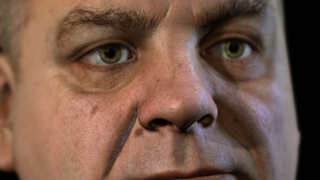
The other problem with Heavy Rain that drew attention from far and wide was the unreliable narrator: The missing thoughts and typewriter scene that would have told us that Scott took those kids. The game acts like anyone could solve the puzzle of The Origami Killer's identity if they just put in the work. It's suggested particularly strongly through Heavy Rain's presentation as a game rather than a traditional piece of media which wouldn't directly challenge the audience. However, it's hard to imagine how solving the case would work in practice. Anything short of making the wild guess that the game was omitting scenes that would implicate Shelby wouldn't seem to get you to the true identity of the criminal. And if you're going to guess that's the case, why not imagine up any number of other asides that would make any character guilty?
When writing about Fahrenheit, I discussed David Cage verbally acknowledging that that game's plot comes completely off the rails near the end. However, a more substantial acknowledgement of that disaster is Heavy Rain itself. Cage has said one big inspiration for the project was an impetus to improve on his previous. Heavy Rain is, like Fahrenheit, a mystery story about a string of ritualistic murders committed by a mysterious killer shrouded in eastern imagery set in an Atlantic Coast American city. Both have multiple protagonists (two of which are detectives), use washed-out colour palettes, are driven by QTEs and dialogue options, and exist against a backdrop of inclement weather. At the end of both, saving the day means taking possession of a child.
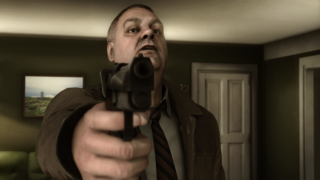
A significant difference is that Heavy Rain has a victim character through which we experience the emotional wrecking ball of those crimes. This title is also light years ahead of Fahrenheit in terms of cogency. It's a low bar, but it beats the previous game hands down just by not having any Illuminati Mayan shamans or ghost AIs made of pure light show up at the eleventh hour. And unlike Fahrenheit, Heavy Rain has almost everything important happen on-screen. But there's one bad habit Cage hadn't managed to drop between his second and third game. In Heavy Rain, as in Fahrenheit, you have an ostensible mystery story where you, none the less, can't figure out the mystery from any of the events before the ending. In that way, these games don't make good on their promise of a detective roleplay. And there are other areas of genre pollution.
See, Quantic had originally developed Heavy Rain as a supernatural thriller. Deleted scenes[1] from the game had Ethan escaping into an alternate reality where tidal waves enveloped his town, and he retained a psychic link to the criminal. That second part will sound familiar to anyone who played Fahrenheit. It's possible that Quantic Dream nixed these magical elements because they were less confident in using the supernatural after it haemorrhaged the conclusion to Fahrenheit. The culling of those scenes left Heavy Rain as the only Quantic Dream game that wasn't a sci-fi or supernatural thriller. It is also why the game has those snippets of Ethan waking up with paper cranes. These were originally meant to teleport into his hands during his visions. When Quantic removed the magical scenes, only the moments of him holding the paper were left. That genre shift also left Heavy Rain with dual loyalty. It's 90% grounded in the real world but then the other 10% of the time, a character will have a technology or a building interior out of step with the stylisation of the rest of its universe.
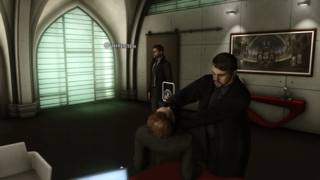
Heavy Rain's town and people are essentially that of the Philadelphia slums that Quantic Dream researched during pre-production. But in contrast to them, you'll get a scene where Norman Jayden puts on some VR glasses and flips open a folder of evidence on a mountaintop or where he must take a glowing blue future drug to feed his addiction. Then there's this religious cultist's home that Jayden and his partner Blake visit one afternoon, and it's the one room in the game that could have been transposed right out of Seven. Lastly, there's the psychiatrist's office which is skinned like a techno-cathedral. It all feels very out of place. In a different way, Shelby's gun-toting stunts through the Kramer house also did not belong to the game. In an interview with Gamasutra, Cage commented: "In Heavy Rain, the heroes didn't have a gun. They didn't need to shoot anyone". This is not true: Ethan is given a gun in one of the trials that he may fire on himself or another man, and Lauren may also kill Scott with a firearm during one of the endings. I think Cage's point is that Heavy Rain never plays out like an action game, but in that scene at the Kramer mansion it does; it makes it stick out like a sore thumb.
Shelby and Ethan are also the only two protagonists who the game seems to believe in. You can see how it would happen: Shelby gets fleshed out because he's the antagonist and we must understand his methods and motivations, and Ethan gets ample development because he's the victim and the one with the most to win or lose. Ethan is humanised through scenes that show him relating to his family and living his home life, and we get to compare how those relationships and routines looked before and after his son's death. Shelby mostly gets by on having barrels of characters; every little twitch of a facial muscle and turn of phrase makes him seem like someone you've met before. But then there's Jayden who has no background or life outside of work to speak of and is so straight-laced there's no colour in him. He does have his Triptocane addiction to struggle with, but it's never that clear what Triptocane is doing for him or what the withdrawal symptoms are. Still, he's got more going for him than Madison.
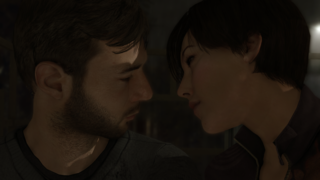
The flaws in Madison's writing are typical of underwritten women authored by men. In comparison to her male counterparts, Madison lacks independent motivations and conflicts. Every other playable character has something they're fighting for: Ethan wants his son back, Jayden wants to solve the case, Shelby wants to avoid capture, and these are just their primary motivations; they get secondary, and in some cases, tertiary concerns as well. Madison starts with the goal of curing her insomnia which is solved so quickly and easily that it wasn't worth bringing up in the first place. The resolution is nothing more than her checking into a local motel. It's a transparent plot device to push her into proximity with Ethan so that she can cleanse herself of any personal missions to become a faithful servant to him.
There are two scenes where her only role is to play nurse to this tortured father and three scenes where her primary purpose is to help him escape the police. Her willingness to drop everything to abet an accused serial killer at the first opportunity has everything to do with what would be useful for Ethan and nothing to do with how a person in her position would act. Whether she enters into a romantic relationship with Ethan is also down to the choice we make as him and that choice alone. After becoming good friends or perhaps even more with the man, Madison will reveal that she's a journalist who's been investigating the claim that Ethan's The Origami Killer. In her sleuthing, Madison would seem to regain some power: she had motivation, she acted on it, and she could endanger Ethan if she wanted to. However, that autonomy never perceptibly manifests in the story before that revelation, and the second it's brought up, Madison makes it clear to Ethan that she's no longer pursuing that article. She is now investigating The Origami Killer for his sake, not hers. It's reminiscent of a beat in Fahrenheit where the detective Clara flips from hunting her suspect to falling in love with him in less than 24 hours.
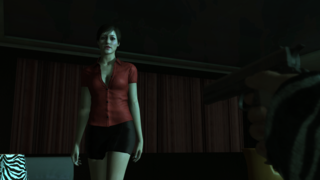
Heavy Rain didn't take Madison's profession seriously anyway. We get to witness Shelby and Jayden's talents on display and even get to see evidence of Ethan and Shelby's old jobs. Madison never once visits an office, takes any notes, actively conducts research, or performs any other action you'd associate with a reporter. She also casually compromises any journalistic integrity by helping the subject of her piece break the law towards potentially violent ends, and depending on how you played, by sleeping with him. In one ending, Madison gets to write a book about tracking down The Origami Killer, but she's otherwise a journalist in name only.
The game is also obsessed with sexualising violence against Madison or placing her in traps where characters can flagrantly overstep her sexual boundaries. Her introductory scene has home invaders chase her about in her underwear, grapple her, and try to knife her to death. The receptionist at the hotel desk makes unwanted sexual advances on her. So does a drug dealer who may also tie her down and try to drive a power drill into her genitals. If the doctor captures Madison and the player fails the scene's QTEs, this is how she dies, but even if the player succeeds, the villain manages to fondle her. She later dresses and dances provocatively for a club boss who forces her to strip at gunpoint. Then there's the garden variety fanservice of Madison going topless for her sex scene and appearing the following morning with no trousers on.
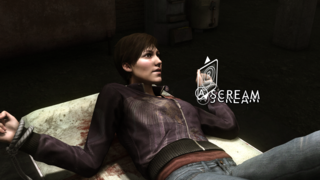
A frequent point of order for feminist media theorists is the failure of male writers to make female characters fully-realised people, but the broad response to this criticism suggests that this is a specialty issue that only feminists or only women would care about. Madison Paige is a perfect example of how making a female character an adjunct of male characters makes for a less developed person for anyone following her, woman or non-woman. By the time we get a scene in which Madison isn't eye-candy, a target for sexual harassment, or Ethan's handmaiden, we're into the third act. Despite the badass image that her motorcycle and leather jacket project, Madison can never just be empowered; she, at best, works for the men around her, and at worst, manages to escape abuse by them by the skin of her teeth.
The other women in the game don't fair much better. Credit where it's due, Lauren's ability to hack away at the camouflaging secrecy around The Origami Killer makes her likeable and self-reliant. As does her being the one to put an end to him, should you find yourself on that narrative byroad. However, we also do get a scene where she is wearing a bathrobe, and one of her sex work clients tries to assault her. In another home visit as Shelby, we tend to a woman in a negligee that has slashed her wrists. It's a chapter tastefully titled "Suicide Baby", and there are plenty more women in various states of undress at Gordi Kramer's party and the Blue Lagoon club. On the topic of non-white representation, the game has one prominent black character, and he's a violent car thief called "Mad Jack" who displays maniacal joy when trying to kill Jayden and whose first line can pop up as "Hey, cracker! Watchu doin' in there?". David Cage has talked about Heavy Rain coming from an adult perspective, but it's pretty clear what the race and gender of that adult are.
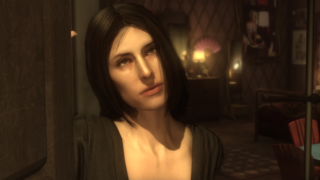
In addition to contributing to the homogenisation of female and non-white characters, Heavy Rain also features a lot of homogeny between its scenes. It has an inexplicable habit of putting a character in a certain situation and then about twenty minutes later putting the same or a different character in a corresponding scenario. The first scene with Scott has him questioning Lauren, in her place of business, about her son, one of the poor boys who fell prey to The Origami Killer. It's a painful topic for her, and she ejects him at the first opportunity, but then a former customer enters her room and attempts to assault her. Scott can step in and try to beat down the assailant. If he does, he wins Lauren's trust in the investigation. Scott's second scene has him visiting a shopkeeper called Hassan at his place of business to question him about his son, a victim of The Origami Killer. This touches a nerve with Hassan, and he may refuse to give up any information; then, a potential customer turns violent against him. Scott can stop the thief, and if he does, he wins over the shopkeeper.
The convenience store scene can also have a lot in common with the sequence where Norman and Blake visit the cultist: both potentially end with the player character talking down a person holding a firearm to an informant on The Origami Killer. You can also see some mirroring between us using Jayden to talk down Blake from his violent fervour at the zealot's flat, and doing the same at Ethan's psychologist's. Then there are three different scenes relatively close together in which we must tend to the wounds of a parent affected by The Origami Killer: "Suicide Baby", and the two with Madison and Ethan. Or there's the resemblance between the scene where Norman must escape a car in the junkyard before he's killed and the scene where Scott must escape a sinking car before he's killed. There's the scene of Ethan running from the cops at The Origami Killer's apartment and the scene of him doing the same at the motel. Madison may aid him in both.
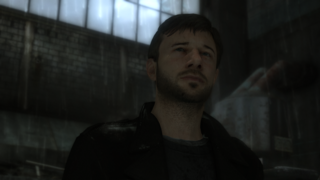
It's unlikely that you'd experience this severe deja vu in a film, but as a game, Heavy Rain needs a lengthy runtime so that audiences feel they got their money's worth and it's hard to move too far outside a certain box of scenarios when writing a gritty action noir in which every scene has a win and loss state. It all drives the game headlong into a habit of repetition. You might also think that with so much redundancy built into the plot, some of the characters wouldn't be necessary for the final scenes. With three people trying to thwart The Origami Killer and all of them having the chance to meet an untimely demise, it looked all too likely that the game was built for one character to make it to the showdown to see off Scott, while the other two would be potential backups. I'm therefore pleased to report that every protagonist plays an essential role in the standoff at the final faceoff: Jayden fights Scott, Ethan attempts to save Shaun, and Madison tries to keep the cops off of Ethan's back.
And while the fandoms for these branching narrative games often lambast them for having a deterministic ending or only one or two ending trails, Heavy Rain is acutely responsive to your actions, especially for a game from 2009. Not only can the major characters end the narrative in a number of different states, but what happens to one character can radically alter the life of another. Take Ethan, for example. He may perish in The Origami Killer's challenges, or he may live, but Shaun may die, motivating him to commit suicide. He may kill himself as an imprisoned man or a free one. If he is free, then he may do this while single, or while in a relationship with Madison, plunging her into a state of grief. If Shaun lived, but Ethan was falsely imprisoned, Shaun can testify that Ethan's not the kidnapper, leading him to be freed, and if Ethan is free, he can start a new life with Shaun. If he was in a relationship with Madison, then she'll be in the picture too.
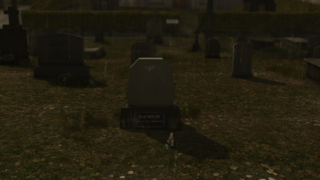
Of course, Ethan can't be in a relationship with Madison if Madison died, and if she did, she'll get a phoney eulogy from a disinterested reporter. If she lived but isn't Ethan's girlfriend (either because he died or didn't start a partnership with her), she'll write a successful book about her experience called Heavy Rain. I won't go into the same detail for Jayden and Scott, but Jayden either dies during the investigation, expires due to Triptocane complications, quits the FBI after a failed rescue of Shaun, or becomes a hero and stays with the FBI but suffers hallucinations from either his AR glasses or the drugs. Scott can die at the hands of Jayden, he can be killed by the cunning Lauren who deduces that he's the killer, or Lauren can die, and he can walk free.
Unfortunately, that statement that Cage made about the game being interactive in all circumstances doesn't ring true in these final moments which are entirely composed of cutscenes. This is disappointing not because film is an inferior storytelling method, but because after ten hours with the game mechanics, there's the feeling of absence when the game suddenly revokes them. And many of the endings are happy to violate all sense of reason, as long as it gets them to the emotion they wish to evoke.
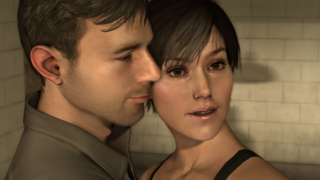
Look at Ethan's "happiest" ending; it's so perfect for him that it feels like a dream. A reporter at a news desk tells the camera that Ethan was able to stop the Origami Killer due to his "bravery", "great courage", and "tenacity". These terms are too subjective to match the style of a news report. Then, when he, Shaun, and Madison buy their apartment, Madison tells him that it'll be a place that they can forget what happened and that one day the fight against The Origami Killer will seem like just a nightmare. I don't think that you smile and forget nearly losing your child because you bought a spacious flat. Ethan needs a therapist, and I could accept Madison not understanding that if she was written as a bit of a ditz, but she has mental health issues, she's a journalist, and she watched Ethan go to hell and back. She'd understand the gravity of the situation. The game also throws a damper on this ostensibly rosy scene by playing Ethan's sombre piano theme over it.
The ending snippets, in general, have some silly views about health. There's one in which Jayden throws away his Triptocane, but then when he takes off his augmented reality headset, he can still see hologram tanks in the real world. It's hilarious, and it disrupts the otherwise serious mood of this closing sequence. The fact that we don't know whether it was the glasses or the Triptocane that caused this delusion also makes it so that we're unclear on what Norman's ailment was. Remarkably, he doesn't have this episode if he kills Shelby which implies that stopping a murderer would have staved off technologically-induced psychosis and that leaves me scratching my head.
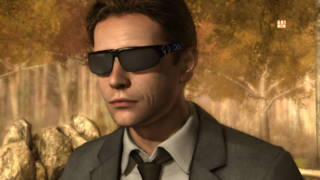
One of Madison's endings runs parallel to the tank incident. If she doesn't make it to the warehouse containing Shaun at the end, she ends up unable to sleep, surrounded by home intruders that are only in her head. So would saving a child or becoming Ethan's wife have been equivalent to psychiatric treatment? The most preposterous ending has Jayden die on his bedroom floor and his AR glasses gifted to the cantankerous Blake. When Blake puts on the glasses, he's on a wind-blasted plateau, and Jayden is there with him. That's nonsense. Fascinating nonsense, but nonsense.
Heavy Rain looks to understand most of the burgeoning issues that weighed down Fahrenheit and carries us all the way to the ending without replicating most of them. Then, just as it's saying its goodbyes and walking out the door, it turns back, and shoots us those same misunderstandings of mental illness and inexplicable plot twists that were so maddening in Fahrenheit. It's such a shame. Taken together, Fahrenheit and Heavy Rain suggest a David Cage who can hand in a competent real-world drama but must be kept away from supernatural storylines at all costs.
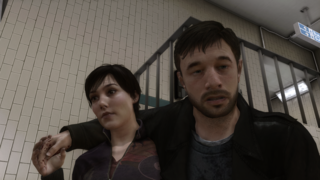
Look, we know that the Citizen Kane of video games wasn't going to be a David Cage thriller from 2009, but looking back, 99% of games criticism in 2009 was as developed as film criticism either. So, how could we expect it to identify what was going to revolutionise the medium? When audiences and even many professional critics made their initial pass at Heavy Rain, they identified plot holes where there were none and often looked at the game's story as a standalone element without considering how its mechanical expression might change how it's received. Additionally, any criticism that fell outside the realm of plot mistakes went largely unvoiced.
The most popular view of media is that any work, once published, is frozen in time. Its visuals, characters, plot, mechanics, or soundtrack are in suspended animation unless patched. This viewpoint is more encouraged than ever in a nostalgia-obsessed industry that claims it can resell you portions of your childhood. But our impression of media comes as a combination of the work itself and the lenses we view it through. Even if you shut your Heavy Rain disc away in a drawer for ten years, when you come back to it today, you'll see a different game because you won't think of games the same way you would have ten years ago. This is one of the reasons I think it's so important to revisit titles of the past: the book is never closed, and our interpretations of media become more informed every day.
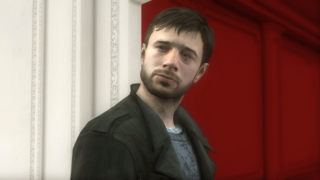
With a modern lens, I can tell you that Heavy Rain is more than a film with some button prompts in it. It shows what might well be Cage's greatest achievement: a command of tactile controls that enable you to reach out and touch characters and their world, even in a highly narrative-driven context. I can tell you that its script always should have had more respect for its one playable female character, and I can tell you that contrary to popular opinion, most of the incoherent plot events come at the end. A game like Heavy Rain may not leave your head spinning with its overhauling of the medium, but it can be an opportunity to look not just at how much the medium has evolved, but also, how much criticism of it has. Thanks for reading.
Notes
- Heavy Rain Bonus Content by Quantic Dream (Jun 24, 2019), Heavy Rain.
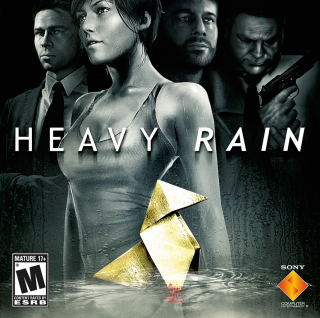
Log in to comment